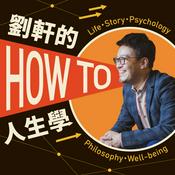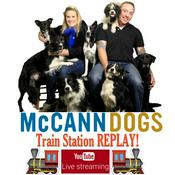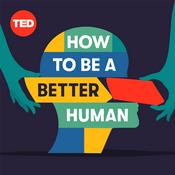64 episodes

Teaching Coding: A Crucial Skill for Future Architects
30/11/2025 | 33 mins.
n this episode of the Architectural Technologist Podcast, hosts Jonathan and Ethan dive into an enlightening discussion with Max Renshaw Fox about the intersection of architecture, coding, and education technology. Max shares his unique journey from teaching to architectural technology, emphasizing the invaluable skill of coding in the architectural realm. The conversation delves into the evolving landscape of architectural software, discussing the role of coding languages such as Pascal, Python, and visual programming languages like Marionette.The hosts and Max explore the critical importance of coding literacy for students in architectural technology programs. They discuss how mastering coding can empower students to transcend the limitations of architectural software, enabling them to innovate and customize tools for their creative processes. With insights into how iterative design and parametric modeling can enhance creative outputs, the dialogue emphasizes the indispensable role of structured thinking and problem-solving skills. Touching on the impact of AI in coding, Max illustrates how AI serves as a force multiplier that requires human creativity and direction for optimal use.Links: https://www.linkedin.com/in/maxrenshawfox/

Exploring BIM's Future and Opportunities
29/9/2025 | 14 mins.
Welcome to the Architectural Technologist Podcast! Host Jonathan dives into an engaging discussion with Jake Nash about the future of Building Information Modeling (BIM) in New Zealand. Jake, freshly appointed as National Vice Chair at BIMIN NZ, brings valuable insights into the evolving landscape of BIM technologies and processes. In this episode, listeners will discover how BIMIN NZ is driving the adoption of BIM and hear impactful anecdotes on fostering student engagement and ongoing education in the industry.In their conversation, Jonathan and Jake explore the critical distinctions between BIM as a process and its common misconceptions as merely a software tool. Jake emphasizes the ongoing shift towards cloud-based BIM solutions, underscoring the necessity for open-source tools and interoperability between different software systems to ensure seamless collaboration. They cover significant discussions around intellectual property (IP) concerns and how these perspectives are changing with the progression toward BIM 2.0 and cloud-based environments. This session is a must-listen for those seeking to understand the latest BIM innovations and the importance of industry-wide knowledge sharing.BIMIN NZ is a volunteer group championing the adoption and use of BIM and digital tools in New Zealand's architecture and construction industries.BIM is often misunderstood as a software tool like Revit; in reality, BIM is a comprehensive process.The industry is progressively moving towards cloud-based BIM solutions, which necessitate changing perspectives on intellectual property sharing and management.Open-source tools like Blender BIM could play a significant role in the future of BIM by offering customizable and accessible solutions.Networking, collaboration, and continuous learning through events and industry interactions are vital for emerging professionals in the architecture and construction fields.Links: BIMinNZ: https://www.biminnz.co.nz

From Technician to Innovator: The Journey in Architectural Technology
22/9/2025 | 24 mins.
In this enlightening episode of the Architectural Technologist Podcast, host Jonathan sits down with Jake, a visionary in architectural technology and digital transformation. From his academic beginnings to his prominent role at Warren and Mahoney Architects, Jake shares his dynamic career journey, emphasizing his experience in digital innovation and building information modeling (BIM). The conversation delves into the importance of evolving with technology in architecture, offering listeners a glimpse into the future of digital transformation.Jake's story is packed with insights and inspiration, making it a must-listen for aspiring architectural technologists. With a keen focus on the intricacies of BIM and the challenges of implementing new digital processes within large firms, this episode provides invaluable lessons on embracing change and fostering a culture of learning. Jake's engaging anecdotes, such as his pivotal decision to pivot towards Revit software, illustrate the critical intersection of bold decision-making and industry evolution. The discussion also touches on Jake's distinguished TEDx talk, where he explored urban design as a tool for enhancing mental health, revealing his multifaceted approach to architecture.Jake underscores the significance of continuous learning and adaptability in the evolving field of architectural technology.He discusses the transition from traditional CAD to advanced BIM processes at Warren and Mahoney, highlighting the necessity of staying ahead in a competitive industry.Jake emphasizes the value of being proactive and taking risks, demonstrated by his strategic pivot to Revit for a major project.The TEDx talk experience broadened Jake's presentation skills, teaching him to engage audiences by connecting at a personal level.For aspiring technologists, Jake advises cultivating enthusiasm, valuing teamwork, and taking pride in one's work, regardless of the task at hand.

Embracing Open BIM and Future Trends in Architectural Technology
08/9/2025 | 18 mins.
Join Jonathan as he welcomes back Biplab Sarkar, former CEO of Vectorworks, to explore the future of Building Information Modeling (BIM). They delve into the significance of open BIM, the evolving landscape of CAD and BIM software, and the challenges and opportunities presented by technological advances like AI and cloud-based platforms. They discuss the necessity of digital literacy in architectural education and the shifting paradigms in design and construction. This engaging conversation provides valuable insights into how technology is reshaping the architectural industry and what it means for future architects and engineers.links:https://www.linkedin.com/in/biplab-sarkar-01212515/

Transforming Vectorworks: Biplab Sarkar on Leadership and Innovation
01/9/2025 | 22 mins.
Jonathan welcomes Biplab Sarkar, former CEO of Vectorworks, to discuss his impactful career journey and contributions to the company. Sarkar shares insights from his prior roles in mechanical CAD and his move to Vectorworks, detailing the improvements he spearheaded, such as the transition to the Parasolid engine and the implementation of viewports. He reflects on transforming company culture and structure, and emphasizes the importance of innovation and collaboration. Listeners will gain a deeper understanding of the strategic and technical advancements that have shaped Vectorworks' evolution.Links:https://www.linkedin.com/in/biplab-sarkar-01212515/
More Education podcasts
Trending Education podcasts
About The Architectural Technologist
Listen to The Architectural Technologist, 6 Minute English and many other podcasts from around the world with the radio.net app

Get the free radio.net app
- Stations and podcasts to bookmark
- Stream via Wi-Fi or Bluetooth
- Supports Carplay & Android Auto
- Many other app features
Get the free radio.net app
- Stations and podcasts to bookmark
- Stream via Wi-Fi or Bluetooth
- Supports Carplay & Android Auto
- Many other app features


The Architectural Technologist
download the app,
start listening.



























